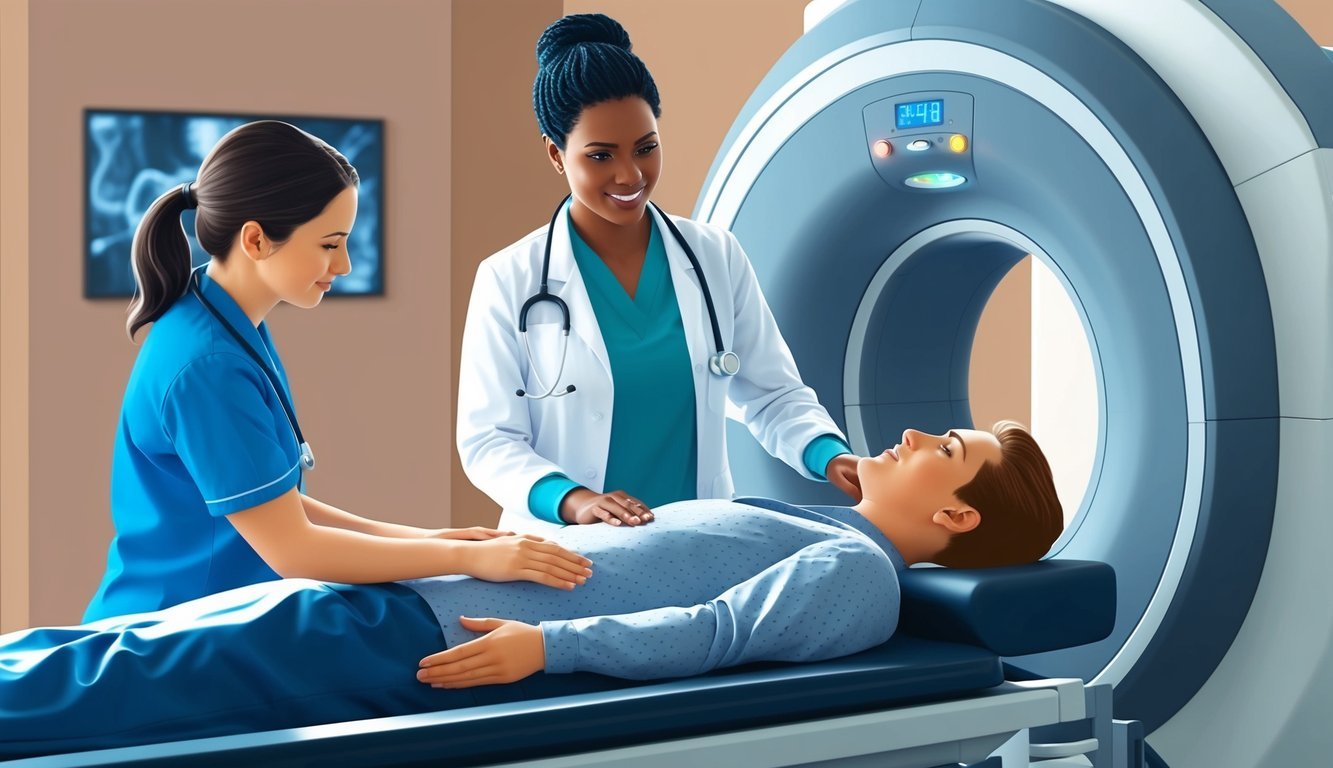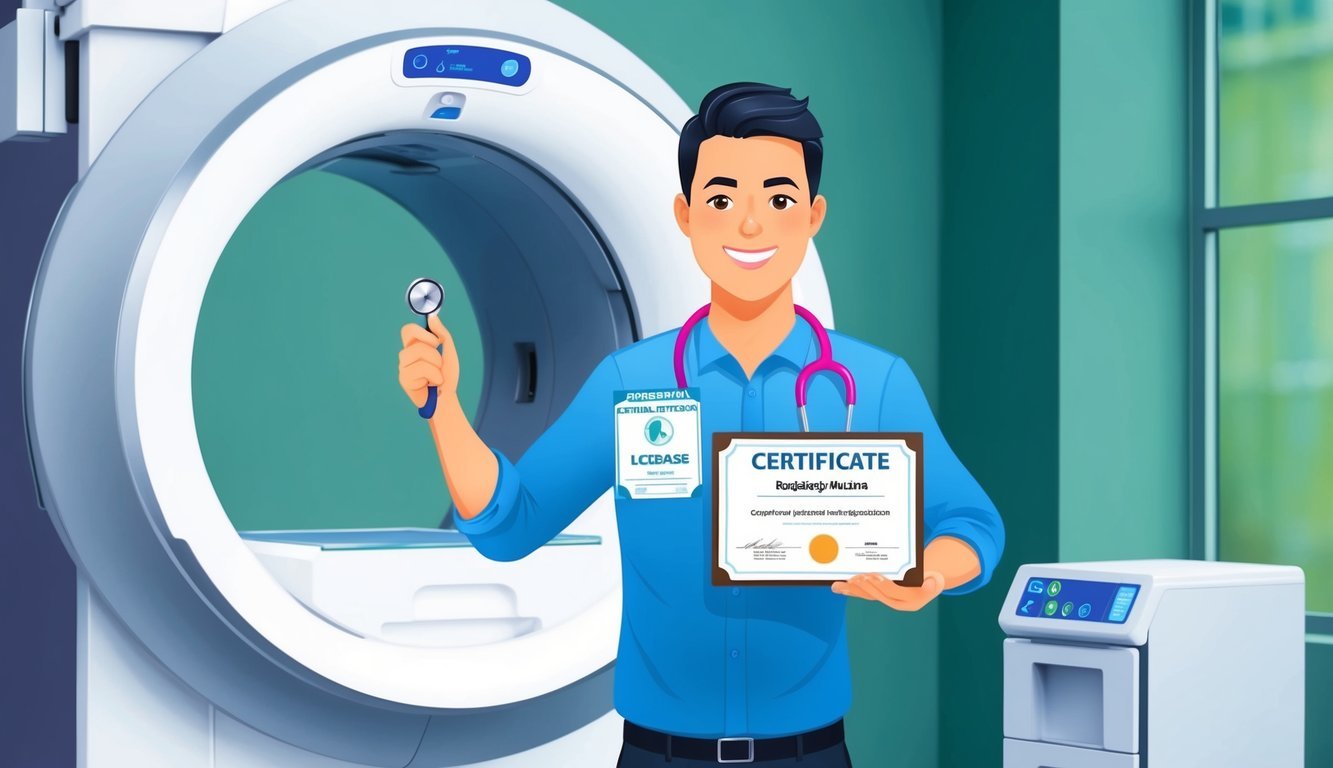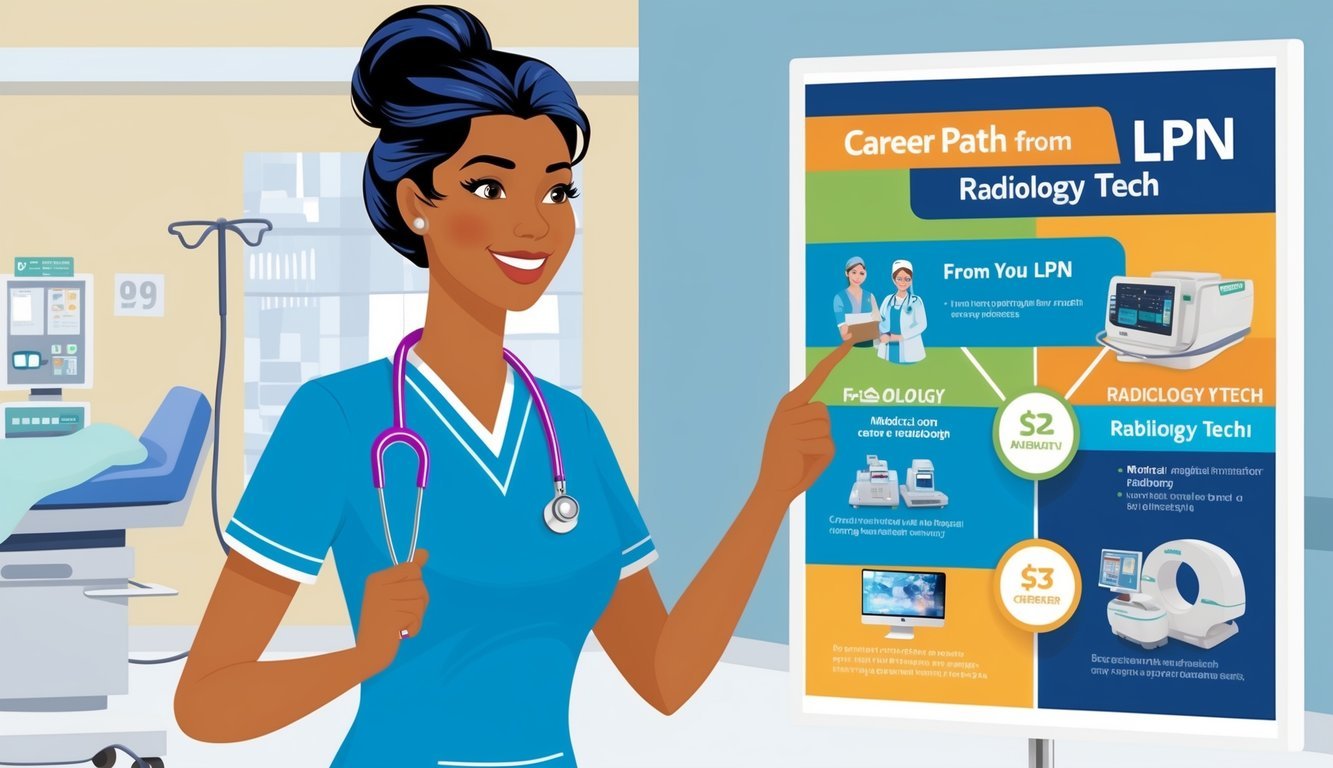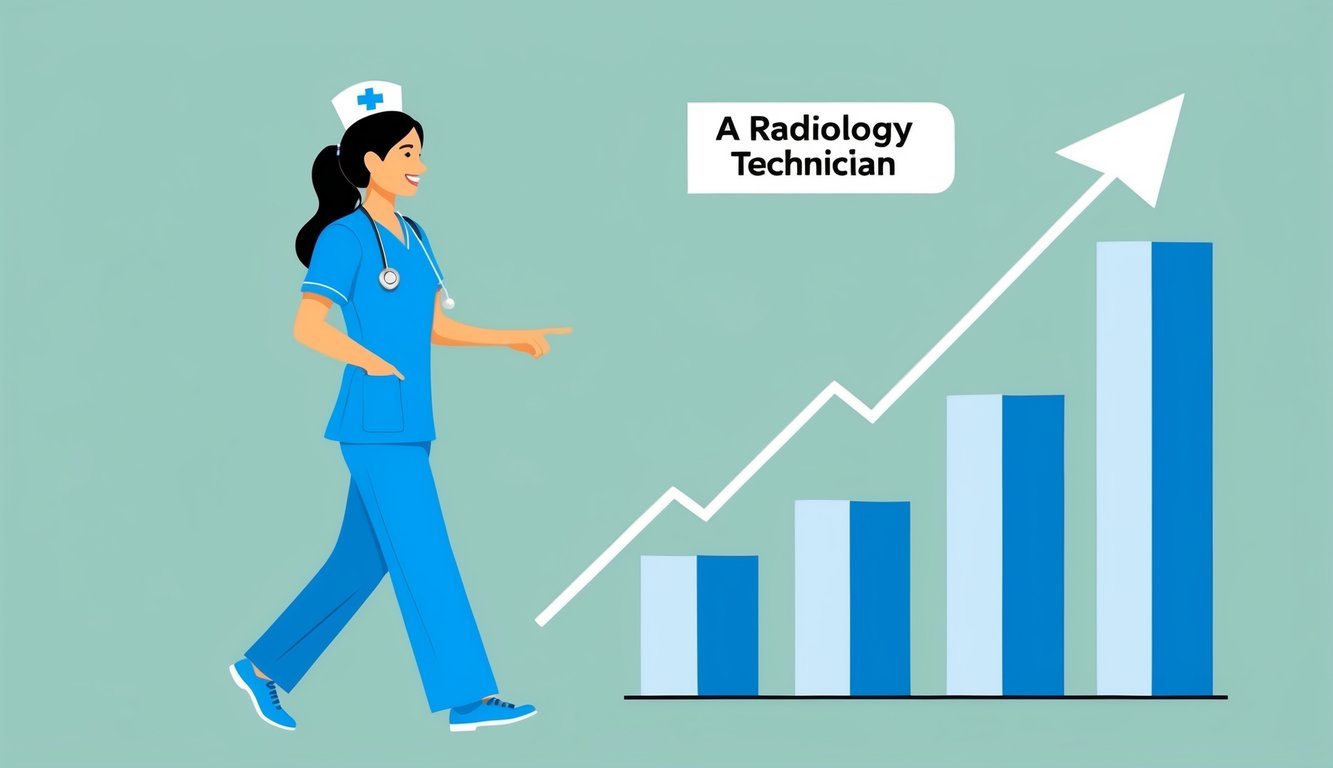Transitioning from an LPN to a radiology tech can strategically advance your career.
As a licensed practical nurse (LPN), you already possess foundational skills that can enhance your effectiveness in radiology.
Pursuing this path allows you to expand your expertise and potentially earn a higher salary while engaging in a dynamic field that offers various specialties.
Radiology technicians play a crucial role in medical imaging, helping diagnose and treat patients using advanced technology.
As healthcare continues to evolve, the demand for skilled radiology professionals remains high.
With your background in nursing, you bring valuable patient care experience that can set you apart in this field.
If you’re considering making this career shift, you need to understand the necessary steps and educational requirements.
Your journey may involve additional training and certifications, but the rewarding opportunities ahead make the effort worthwhile.
Explore resources on how to become a radiology technician to get started on this transformative career path.
Understanding the Role of LPN and Radiology Tech

The roles of Licensed Practical Nurses (LPNs) and Radiology Technologists are vital in the healthcare system.
Each profession has distinct responsibilities and scopes of practice that contribute to patient care.
Scope of Practice for LPNs and Radiology Techs
LPNs primarily focus on providing basic patient care under the supervision of registered nurses (RNs) or physicians.
Their scope includes administering medications, monitoring patients’ vital signs, and assisting with daily activities.
In contrast, radiology techs, or radiologic technologists, specialize in performing diagnostic imaging procedures such as X-rays, CT scans, and MRIs.
They are responsible for ensuring patient safety and comfort during these procedures and must have a thorough understanding of radiologic technology principles and equipment.
| Role | Responsibilities |
|---|---|
| LPN | Basic patient care, medication administration, vital sign monitoring |
| Radiology Technologist | Perform imaging procedures, ensure patient safety, maintain equipment |
Patient Care Responsibilities
In patient care, LPNs play a significant role in directly interacting with patients.
They provide emotional support, assess patient needs, and communicate relevant information to the healthcare team.
Radiology techs also engage with patients, albeit in a different manner.
They prepare patients for imaging procedures, explain the process, and position them correctly for optimal results.
Both professionals must display strong communication skills and empathy, ensuring patients feel comfortable and informed.
Additionally, understanding patient safety protocols is critical for both roles to minimize risks during care and imaging procedures.
| Professional | Patient Interaction |
|---|---|
| LPN | Engages in holistic patient care, monitors health |
| Radiology Technologist | Prepares patients for imaging, explains procedures |
Educational Pathways

Transitioning from an LPN to a radiology technologist involves specific educational requirements and training.
Understanding the various pathways can help you make informed decisions about your career trajectory.
From LPN to Radiology Technologist
As an LPN, you already possess a solid foundation in patient care and medical terminology.
This background can be advantageous as you pursue a career in radiologic technology.
You will need to complete a radiologic technology program, which typically requires an associate degree or bachelor’s degree.
Your nursing school experience will aid in comprehending anatomy and physiology, crucial for diagnosing and imaging patient conditions.
Many programs accept LPNs with advanced standing, allowing you to bypass certain foundational courses.
After completing the program, you will need to pass a certification exam to practice as a radiology technologist.
Accredited Radiologic Technology Programs
Choosing an accredited radiologic technology program is vital for your education and job prospects.
Look for programs accredited by the Joint Review Committee on Education in Radiologic Technology (JRCERT).
These programs ensure that the curriculum meets the industry standards necessary for developing competent radiologic technologists.
Most accredited programs offer essential coursework in diagnostic imaging, patient care, and radiation safety.
In addition, you’ll gain hands-on experience during clinical rotations.
These programs may vary in duration but typically last between 24 to 36 months.
Completing an accredited program allows you to qualify for national certification, enhancing your job opportunities.
Advanced Training and Specializations
After entering the radiologic technology field, consider pursuing advanced training and specializations.
Many technologists choose to focus on areas such as ultrasound, nuclear medicine, or magnetic resonance imaging (MRI).
Specialized training can enhance your skill set and increase your earning potential significantly.
Certifications in these specialties often require additional coursework and clinical training.
Enhanced qualifications can lead to positions in advanced healthcare careers, potentially influencing your salary and job growth positively.
Consider seeking programs that offer these advanced specialties after completing your initial radiologic technology degree to remain competitive in the job market.
Certification and Licensure

As you transition from a Licensed Practical Nurse (LPN) to a Radiologic Technologist, understanding certification and licensure is crucial.
These credentials not only validate your skills but also enhance your career opportunities.
The following sections outline the key aspects of credentialing bodies, state licensure requirements, and the importance of maintaining professional competence.
Credentialing Bodies and Certifications
In the field of radiologic technology, the primary credentialing body is the American Registry of Radiologic Technologists (ARRT).
This organization provides certification in various radiologic disciplines.
To earn ARRT certification, you must complete an accredited educational program, demonstrate ethical standards, and pass an examination.
Certifications can include specialties such as:
- Radiography
- Computed Tomography (CT)
- Magnetic Resonance Imaging (MRI)
Obtaining these certifications can increase your job prospects and earning potential.
Employers often prefer candidates with ARRT certification due to its recognized standards of excellence.
You can find more information on requirements and pathways for certification on the ARRT website here.
State Licensure Requirements
In addition to national certification, you must meet specific state licensure requirements to work as a radiologic technologist.
Each state has its own regulations, which can include additional exams or background checks.
Typically, you will need to:
- Complete an accredited program.
- Obtain ARRT certification.
- Apply for a state license through your state’s health department.
For instance, several states require passing the National Council Licensure Examination for Registered Nurses (NCLEX-RN) as part of the process for LPNs moving into this field.
Checking your state’s specific requirements will prepare you for this step in your career transition.
Maintaining Professional Competency
Once you achieve certification and licensure, maintaining your professional competency is vital.
ARRT credentials are valid for two years, requiring ongoing education to ensure up-to-date knowledge and skills.
This can include:
- Continuing education courses
- Workshops
- Professional conferences
Staying current with advancements in radiologic technology is crucial not only for personal growth but also for delivering high-quality patient care.
Regularly engaging in professional development activities helps uphold the integrity of your certification and licensure.
Career Advancement and Job Opportunities

The field of radiology offers significant career advancement and a variety of job opportunities for radiologic technicians.
You can find roles in diverse clinical settings and specialty areas, which can enhance your career trajectory and job satisfaction.
Career Outlook for Radiology Technicians
Radiology technicians can expect a promising job outlook, with an anticipated growth rate of 9% over the next decade.
This is driven by factors such as an aging population and advancements in medical imaging technology. Job opportunities are prevalent in hospitals, outpatient care centers, and diagnostic laboratories.
To give you an idea of potential earnings, here are some average annual salaries:
| Position | Average Salary |
|---|---|
| Radiologic Technologists | $61,900 |
| MRI Technologists | $74,690 |
| Angiography Technologists | $81,356 |
The expansion of imaging modalities, such as computed tomography (CT) and magnetic resonance imaging (MRI), further contributes to job growth in this sector.
Specialized Roles in Diagnostic Imaging
Specializing in areas of radiology can significantly boost your career prospects.
Options include sonography, bone densitometry, and vascular interventional radiography.
Each specialty offers unique challenges and rewards, positioning you for advancement in the healthcare field.
Engaging in continuing education and obtaining certifications helps you stay competitive.
Specialized training in these modalities can open doors to higher-paying positions and leadership opportunities.
For specific areas like ultrasound or vascular imaging, obtaining board certifications can enhance your credibility and lead to specialized roles.
You may also collaborate with radiologists and contribute to critical diagnostic processes, making your role vital in patient care.
Salary and Growth Potential

When considering a transition from LPN to radiologic technician, understanding salary differences and growth opportunities is crucial.
This section highlights the earnings of each profession and the factors that determine salary levels, which can impact your decision-making process.
Comparing LPNs and Radiologic Technicians’ Earnings
LPNs typically earn a median annual wage of approximately $48,000, while radiologic technicians earn about $61,980 according to the Bureau of Labor Statistics.
The potential for higher earnings exists as radiologic technicians gain experience.
| Role | Median Annual Salary |
|---|---|
| Licensed Practical Nurse | $48,000 |
| Radiologic Technician | $61,980 |
For LPNs looking to specialize, registered nurses with advanced roles, such as nurse practitioners, can earn significantly more, potentially reaching $100,000 or more annually.
Transitioning to a radiology tech role could offer you increased earning potential.
Factors Influencing Salary
Several elements affect salaries in both fields.
Experience plays a significant role.
For instance, radiologic technicians with 1-4 years of experience earn around $22.41 per hour.
Meanwhile, those with 10-19 years can earn approximately $29.00.
Other factors influencing salary include:
- Location: Salaries vary by state. For example, technicians in urban areas typically earn more.
- Specialization: Those who specialize in fields like MRI or CT might command higher wages.
- Certifications: Additional credentials can enhance salary prospects.
Knowledge of these elements can help you make informed career decisions as you evaluate your next steps.
For more detailed information on salaries and career paths, you can refer to resources like Nurse.org and Forbes.

